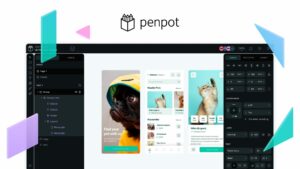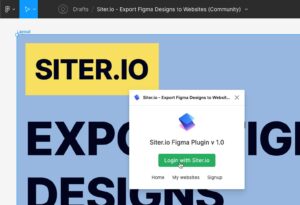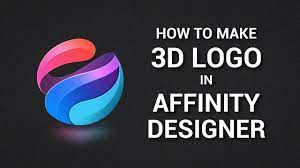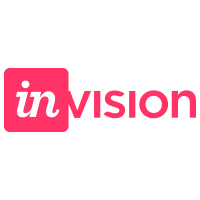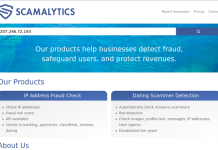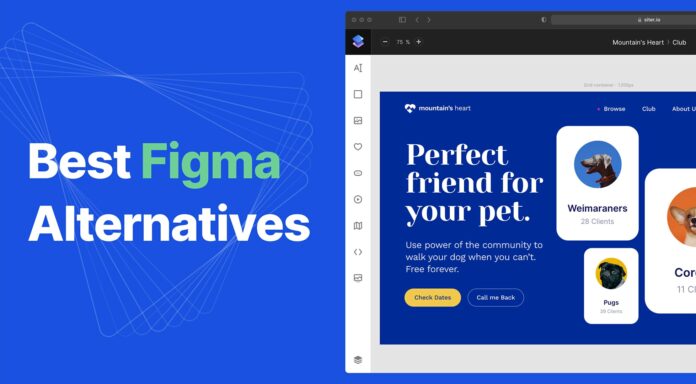
Best Figma Alternatives will be discussed in this article. The information that Adobe bought Figma is now well known. Memes have started inundating Twitter and Slack channels in huge numbers. And although I can’t speak for everyone, I believe that a significant percentage of designers won’t be able to handle this news well.
The information that Adobe bought Figma is now well known. Memes have started inundating Twitter and Slack channels in huge numbers. And although I can’t speak for everyone, I believe that a significant percentage of designers won’t be able to handle this news well.
Top 6 Figma Alternatives For UI And UX Designers
In this article, you can know about Top 6 Figma Alternatives For UI And UX Designers here are the details below;
First and foremost, Figma will continue to operate independently (as a company separate from Creative Cloud) for the time being. That much was stated in the CEO Dylan Field’s announcement. This article will be updated as more specific information about their future plans becomes available.
The other is that Figma doesn’t really have any rivals when it comes to a free plan and a Community Hub. Small-time designers and perhaps bloggers may not be able to distinguish between their Free and Pro programs. The quality is that high.
The competition will have some big shoes to fill. It’s not simply that Figma is a cross-platform design and prototyping tool that prioritizes collaboration and has a wide range of applications. Figma transformed from a design tool to a hub for tools, resources, and instructions on how to make world-class user interfaces in just six short years.
Facebook Community
Its resources are so good that even if you use Sketch, InVision, Adobe XD, or any other alternative platform, Figma might still be a part of your regular design workflow. And for true Figma users, this is ten times more pronounced. A very comprehensive source of plugins, including templates, UI kits, textures, and patterns, makes designing much more pleasurable.
I believe it’s fair to say that people are more concerned about losing access to these community-curated tools than they are about Adobe buying Figma. Including a community component could be advantageous whether you are a paid or free design tool. And this will be truer further if Adobe does decide to discontinue Figma and move it inside Creative Cloud.
Figma Alternatives for UI & UX Designers
We will ignore the various factors that make Figma a fantastic platform because people are remarkably adaptable beings. We’ll instead examine what makes other Design / Prototyping tools a good substitute.
1. Penpot
Penpot is being developed as open-source software for creating, collaborating, and prototyping. It has been under development since 2021 (although the idea for it appears to have originated in 2018). It is cross-platform (browser-based), and Elestio or Docker can be used to self-host Penpot.
The project itself is still in beta, and I anticipate that it will stay there for a while. What are the foundational tenets on which Penpot is based, though?
- Component-driven interface for managing and generating design projects is called Design.
- Create interactive UX previews during prototyping to test design flow.
- Real-time team collaboration with support for comments and feedback is called collaboration.
- Create feedback on particular components and share it with your team.
- Community-curated libraries and templates are resources.
Therefore, Penpot, which is also free, is extremely similar to what Figma has to offer. Figma and other tools that are similar to Penpot share a lot of similarities with its user interface.
I believe that if you experiment with it, you’ll undoubtedly produce results that don’t feel quite as sharp as those in Figma. Images can be copied and pasted, although the Assets structure on its own could take some getting used to given how linear Figma’s is.
Auto Layout is one feature that Penpot lacks, however this tweet stated that it is being worked on and would be available soon. Additionally, efforts are being made to enable you to upload your.fig files to Penpot. This appears to occur after Auto Layout is introduced.
You may view Gary Simon from DesignCourse’s 30-minute introduction video here. Gary has created a tutorial for Penpot. The tutorial gives a good overview of what Penpot is capable of at this point in its development and is based on a straightforward landing page design for a portfolio.
2. Sketch
The Sketch team must be thrilled with the news. The best UI/UX design tools available are Figma and Sketch, and by a wide margin. The web app can only be used for sharing and providing feedback on prototypes, which is the sole drawback of Sketch. However, there have been speculations that they intend to expand to other operating systems. This is another figma alternatives.
Although they’ve already done it for me, I’d love to sit here and analyze the different analogies between Figma and Sketch. Anyone who is unfamiliar with Sketch or who has used it before but needs a reminder of how it stacks up against Figma should visit that page.
Sketch is undoubtedly among the top in terms of its commitment to the community. There are numerous active freebie websites for Sketch, and in addition to features like Extensions and Integrations, Sketch offers a Plugin system. Additionally, they offer a wonderful free course that introduces the capabilities and interface of Sketch as well as the fundamentals of design.
Regarding costs, Sketch provides a free 30-day trial and its premium subscription has a fixed annual cost of $99 per user.
3. Siter
Siter could be a good substitute for Figma if you were using it largely to leverage pre-made UI kits that you would then edit and use for HTML templating. This design tool was created as a no-code publishing platform for creating and customizing website layouts.
Their platform is fantastic since it allows you to invite other users to work together on the same design. For anyone working for a company that specializes in creating live websites for clients, this could be a fantastic solution. Once the project is complete, you can give your client ownership.
Other characteristics include:
- Adding custom code to your design allows you to have it run when you publish or preview it.
- SVG – You may use curves to generate your own SVG vectors or import and edit existing ones.
- Motion: Change the state of an element (transitions, hover, active) while viewing a live preview.
- Figma Import: You can import an already-created Figma project to create a functioning website!
Pricing for personal projects starts at $12 a month, and it rises to $19 for projects with up to five collaborators. This is another figma alternatives.
4. UXPin
One issue with design tools is that, after some time, they all feel the same, whether they are used for UI design or graphics. Even while each tool may have a unique function that the others don’t, design tools are typically constructed similarly.
So, How does UXPin different from that?
Using the same components that programmers do, UXPin is a code-based design tool that enables you to create user interfaces. The Merge capability is exclusive to React and is available.
UXPin is a mature platform for daily UI development, including prototyping, wireframing, and collaborative work. It can be used without this capability. If starting your next UI project with an existing Design System doesn’t sound absurd enough, UXPin also supports integrating them. The component libraries that UXPin supports are all listed in the Adele directory, or you can select the Material UI option.
Unabashed plug: I’ve previously written about React component libraries.
The UXPin Docs are the best resource if you want to learn more. You’ll find comprehensive tutorials on every feature this tool offers, as well as examples of how to use the Editor and a ton of other capabilities, including information on their Merge option.
How about the cost? Merge and Standard are the two distinct plans that UXPin offers. The Startup plan for Merge costs $89 per month for a single user, and the Company plan costs $119 per month for a single user. The Pro program starts at $19 per month per user and goes up to $69 per month.
5. Affinity Designer
Because Affinity Designer is not specifically marketed as a UI/UX tool, it is frequently disregarded. However, it is competent in the design of mockups, user interfaces, logos, and brand materials. Additionally, it contains outstanding illustration elements, which are fantastic if your main goal in utilizing Figma was to develop and optimize things like brand assets and your overall creative framework. This is another figma alternatives.
Joshua Omido’s video provides a helpful explanation of both the Affinity user interface and the complete process of working with a portable app UI design. However, Affinity Designer does not have a plugin system or capabilities like real-time collaboration or prototyping. For teams, this is unquestionably a deal-breaker.
Last but not least, Affinity Designer shines in the area of its licensing scheme. You can use the software on your Windows or macOS devices after making a single payment of $60 including a free trial.
6. InVision
There is an alternative to FigJam called InVision. You are probably already familiar with FigJam if you use Figma. If not, it is an online whiteboard interface for teams where you can collaborate on concepts, make decisions, & visualize project trajectories. The similar solution is offered by InVision, which emphasizes price (it offers a free plan!) and uncomplicated features. This is another figma alternatives.
Are there any (native) UI/UX design tools for Linux?
The only born Linux UI/UX design tool, as far as I’m aware—and I’ve seen this subject asked a lot in the last 24 hours—is Akira.
Akira: A Vala and GTK-based native Linux application for UI and UX design
The project is still very much in its early stages. I anticipate that development will be quite modest unless people are ready to make their own contributions or provide financial support. This is another reason why many of the more well-liked UI/UX design tools exclusively concentrate on a browser-based user interface, as it does away with the requirement to create native programs.

